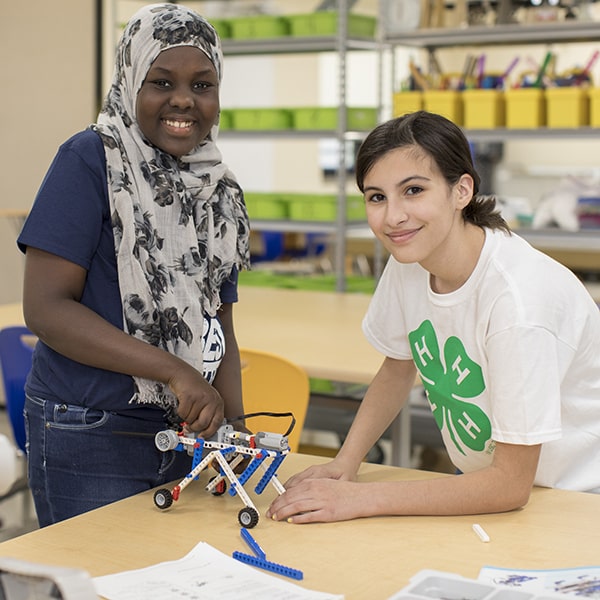CHEVY CHASE, MD - Today, National 4-H Council announced a $5 million grant from Google.org, Google's philanthropic arm, to expand computer science skills and education to underserved youth across the country. This grant will continue to build upon Google.org's support of computer science in 4-H that has reached 1.4 million students since 2017. With this funding, 4-H will increase the reach of the Computer Science (CS) Career Pathways program for students from rural and under-resourced communities who have had minimal CS education. The new grant will help teach young people through Cooperative Extension's in-person 4-H programs and online resources. These resources will provide access to computer science education to youth nationwide, including six million 4-H'ers and more than 3,500 educators across the 4-H system anytime and anywhere.
This effort combines the reach and educational expertise of 4-H, the nation's largest youth development organization, and the power of Google's computer science knowledge and innovation. Since its start, 1.4 million youth have participated in the program, with 65% living rurally, 56% of teen CS leaders being girls, and 47% coming from racially diverse backgrounds.
"Despite the demand for high-skilled computer science professionals, opportunities to access this education have been out of reach for youth from rural and other underserved communities," said Jennifer Sirangelo, president and CEO, National 4-H Council. "We are proud to continue this initiative with help from Google.org to make a real difference in the lives of young people who otherwise wouldn't be given a chance to discover their interest in computer science. This program goes beyond preparing youth for future careers. Teaching computer science at a young age develops problem-solving skills and confidence, and most important, empowers young people to find their spark and passion that translates to success in life."
The Code.org Advocacy Coalition's 2021 State of Computer Science Education report found that while 51% of public high schools in the United States offer computer science, rural schools, urban schools, and schools with high percentages of economically disadvantaged students are less likely to offer CS education. What's more, Black, Hispanic, and Native American students are less likely to attend schools offering CS courses than white students. Delivering free computer science education to underserved communities is part of 4-H's mission to provide equitable access to skills that help young people create opportunity and maximize their potential. The program also offers training and capacity-building for educators, volunteers, professionals, and even teen leaders to create their own curricula and reach more youth.
"We believe Google and other companies have a responsibility to help people get the skills they need to get a good job, start a new business, and provide a solid foundation for their families - no matter what their age or where they live," said Sundar Pichai, CEO of Google & Alphabet. "Computer science education is an important piece of this, and we look forward to working with our partners like 4-H to unleash the talent and drive of millions of people in communities across the US."
This is the third grant Google.org has made in 4-H's mission to reach and provide young people with opportunities in computer science education, totaling nearly $14 million since 2017. Google's support will expand existing and bring new CS education programs to communities across Iowa, North Carolina, Oklahoma, Ohio, Pennsylvania, South Carolina, Virginia, Nebraska, and West Virginia. Read more about the initial grant that established the 4-H CS Pathway across 23 states.
About 4-H
4-H, the nation's largest youth development organization, grows confident young people who are empowered for life today and prepared for careers tomorrow. 4-H programs empower nearly six million young people across the U.S. through experiences that develop critical life skills. 4-H is the youth development program of our nation's Cooperative Extension System and USDA and serves every county and parish in the U.S. through a network of 110 public universities and more than 3000 local Extension offices. Globally, 4-H collaborates with independent programs to empower one million youth in 50 countries. The research-backed 4-H experience grows young people who are four times more likely to contribute to their communities; two times more likely to make healthier choices; two times more likely to be civically active; and two times more likely to participate in STEM programs. Follow us on Facebook, Instagram, and Twitter.
About Google.org
Google.org, Google's philanthropy, brings the best of Google to help solve some of humanity's biggest challenges combining funding, innovation, and technical expertise to support underserved communities and provide opportunity for everyone. We engage nonprofits and social enterprises who make a significant impact on the communities they represent, and whose work has the potential to produce meaningful change. We want a better world, faster - and we believe in leveraging technology and applying scalable data-driven innovation to move the needle.













































